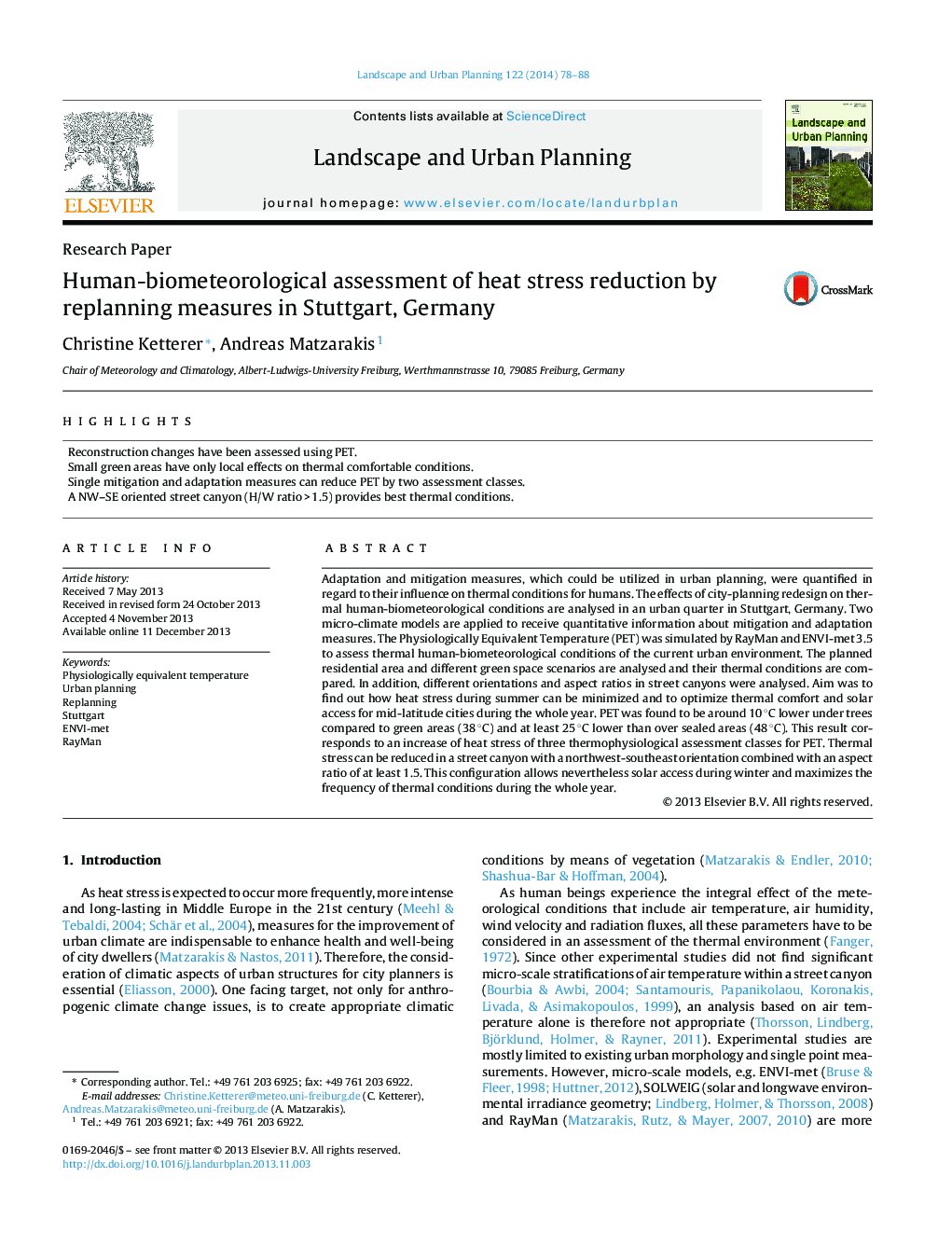| Article ID | Journal | Published Year | Pages | File Type |
|---|---|---|---|---|
| 7461732 | Landscape and Urban Planning | 2014 | 11 Pages |
Abstract
Adaptation and mitigation measures, which could be utilized in urban planning, were quantified in regard to their influence on thermal conditions for humans. The effects of city-planning redesign on thermal human-biometeorological conditions are analysed in an urban quarter in Stuttgart, Germany. Two micro-climate models are applied to receive quantitative information about mitigation and adaptation measures. The Physiologically Equivalent Temperature (PET) was simulated by RayMan and ENVI-met 3.5 to assess thermal human-biometeorological conditions of the current urban environment. The planned residential area and different green space scenarios are analysed and their thermal conditions are compared. In addition, different orientations and aspect ratios in street canyons were analysed. Aim was to find out how heat stress during summer can be minimized and to optimize thermal comfort and solar access for mid-latitude cities during the whole year. PET was found to be around 10 °C lower under trees compared to green areas (38 °C) and at least 25 °C lower than over sealed areas (48 °C). This result corresponds to an increase of heat stress of three thermophysiological assessment classes for PET. Thermal stress can be reduced in a street canyon with a northwest-southeast orientation combined with an aspect ratio of at least 1.5. This configuration allows nevertheless solar access during winter and maximizes the frequency of thermal conditions during the whole year.
Related Topics
Life Sciences
Agricultural and Biological Sciences
Ecology, Evolution, Behavior and Systematics
Authors
Christine Ketterer, Andreas Matzarakis,
